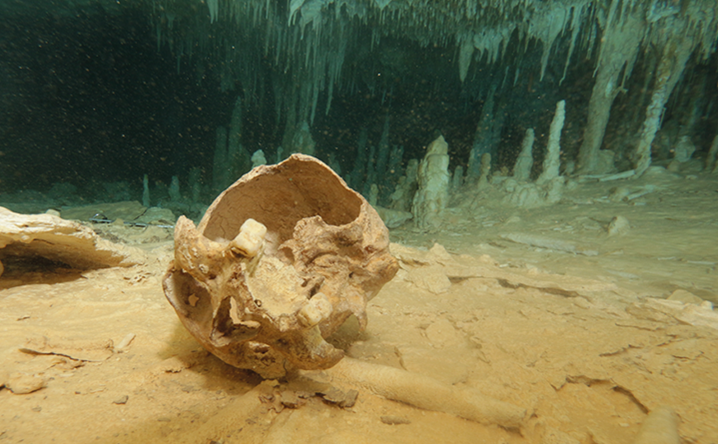Recently discovered skeletal remains found by cave divers in the Yucatan Peninsula have called into question common assumptions about human origins in the Americas.
Popular current theory postulates that humanity reached North America by crossing Beringia (the Bering Land Bridge) sometime between 16,500 – 30,000 years ago.
However, the “morphologically different” skeleton discovered in the Chan Hol cave near Tulum in the Mexican state of Quintana Roo, suggests that humans may have arrived into the Americas from a multitude of source locations and ancestries.
According to a research paper published earlier this month, the skeleton, known as “Chan Hol 3,” dates back roughly 10,000 years and contains genetically divergent characteristics compared to Paleoindian populations commonly associated with the Yucatan during that time period.
As the research states: “This [discovery] supports the presence of two morphologically different Paleoindian populations for Mexico, coexisting in different geographical areas during the Late Pleistocene-Early Holocene.”
The presence of two morphologically different Paleoindian populations in Mexico directly conflicts with the traditional Land Bridge theory that mandates a single genetic source lineage for all indigenous peoples of North and South America.
Dr Silvia Gonzalez, a professor of quaternary geology and geoarchaeology at Liverpool John Moores University, and one of the study authors, told the PA news agency: “The new results are important because they question the ‘traditional model’ for the peopling of the Americas with one single and homogeneous Paleoindian population migrating very fast from Beringia to Patagonia after 12,000 years ago.
“Our results indicate that at least two morphologically different Paleoindian populations were coexisting in Mexico between 12,000 to 8,000 years ago, one in Central Mexico and the other in the Yucatan Peninsula.”
In a follow-up interview with the BBC, Dr. Gonzalez confirmed that her teams’ research findings raise new anthropological questions. “We have discovered that there is this skeleton of a woman of about 30 years old that was found in a submerged cave in the Yucatan Peninsula in Mexico. And when you look and compare her with another nine skeletons that have been found on the Yucatan, and compare them against the rest of the Paleoindian population … they look very different to the normal Paleoindians that we know.
Dr. Gonzalez says that as more information and evidence becomes available, it becomes increasingly clear that more than one route was utilized to gain access to the North and South American continents.
“One of the proposals is that they came from the coast,” Gonzalez continues. “Some others believe that they may have come by boat. But probably there were several routes: some terrestrial, some by the coast and some maritime. So, there are different possibilities there.”






















